
Clusia Cove, at Lakeside Gardens in Jurong Lake Gardens
Open Spaces During Covid
As urban planners, we believe that public spaces are integral to the resiliency of a community. During the COVID-19 pandemic, we made several observations which we believe are useful in designing ideas and solutions to create a pandemic resilient community.
When cities were locked down and distant commute was not possible, communities were encouraged to use the public spaces in close proximity but not everyone has access to one in their neighbourhood. In response, many cities around the world have taken initiatives to increase the usable public space for residents by closing streets for activities and through pop up parklets in sidewalks, parking lots and plazas, increase usable public spaces which are in close proximity to urban communities.
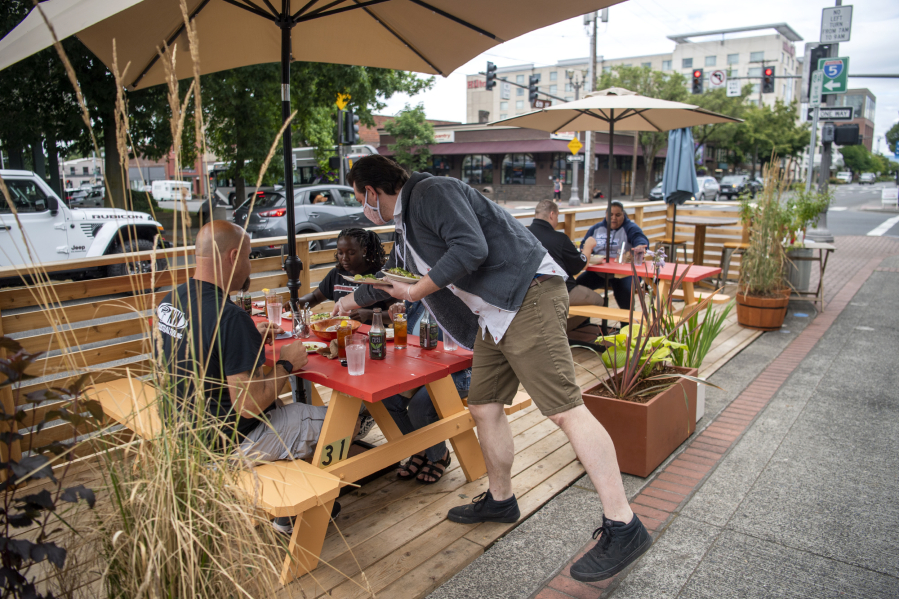
Outdoor seating area built atop a street parking space. Restaurants in Vancouver create parklets as a way to alleviate the indoor seating restraints created by the COVID-19 pandemic (Image Credit: The Columbian)
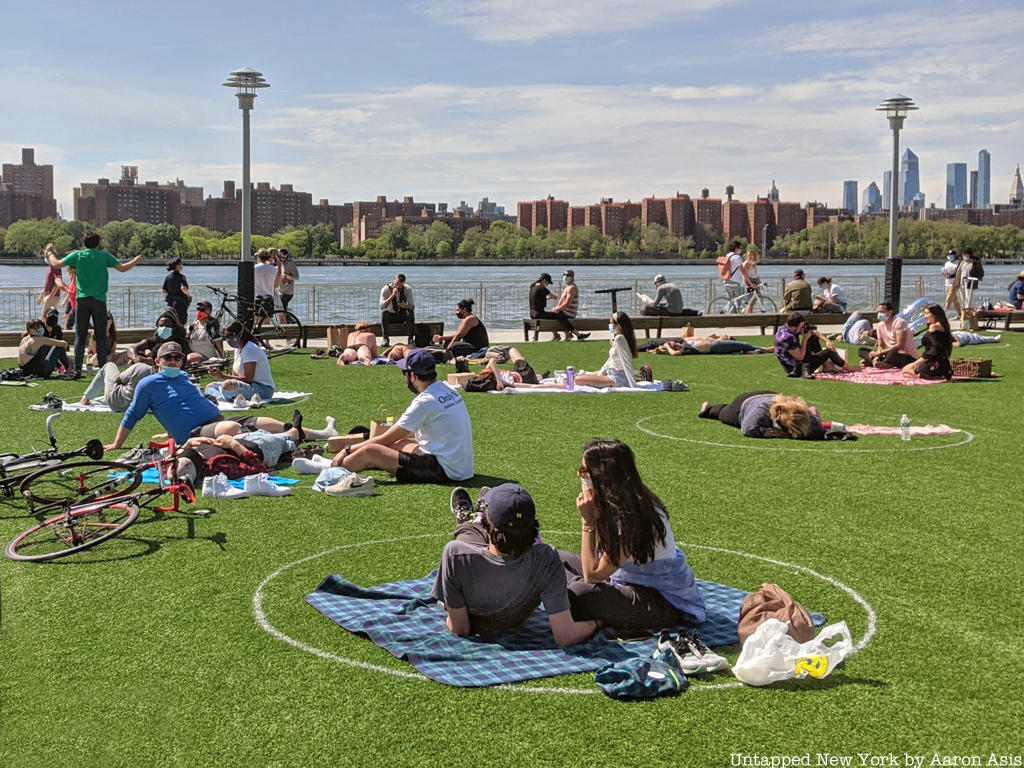
Social Distancing Circles at Domino Park, Brooklyn. (Image Credit: Untapped, New York)
Public Spaces as Refuge Space
Based on a global survey conducted by notable city planner Jan Gehl on public space usage during the COVID-19 pandemic, results revealed that 65% of respondents utilise public space and there is a value shift with regards to the use of these public spaces. Public spaces have become more important and more appreciated as these spaces are not just for the purpose of exercise, but also for drawing fresh air and sunshine.
Since the pandemic outbreak, many of us have been confined to our own homes. With retail shops and malls, restaurants, cafes, offices, schools mostly closed, public open spaces like gardens and parks have become essential spaces of refuge for us to refresh our minds since these are the only places we are allowed to access during this period.
Based on our own observations during the Circuit Breaker period, Singapore has also seen a surge of usage of public open spaces, especially at the neighbourhood parks and nearby park connectors. On many mornings and afternoons, people are seen utilising open spaces in the neighbourhood as a place to exercise (walking, jogging, cycling), or just to get some fresh air outside of their homes. In Singapore where most residents live in apartments, open spaces like these become a sanctuary where one can enjoy some leisure and fresh air outside of their homes.
The planning of public open spaces has always been an important component in master planning and urban design. COVID-19 has led us to experience first-hand how crucial it is to plan for blue and green spaces to be accessible to communities, as these facilities will have a great impact on the mental well-being and health of people. Public open spaces such as gardens and neighbourhood parks will become even more significant, and it will become even more essential in the urban master planning that the provision of these spaces are always ample, easily accessible, and strategically located within close proximity to the users – i.e. residents in the neighbourhood, or office workers in commercial areas, etc.

Provision of central green and neighbourhood parks in a master plan is essential for communities
(Illustration for a township master plan project in West Java, Indonesia – CPG Consultants)
Strengthening Open, Green & Blue Spaces
- Shared or Multi-Use of Community Spaces
- Decentralisation of Amenities
- Transforming spaces into Urban Yards
Shared or Multi-Use Urban Spaces
During a pandemic, it is inevitable that communities will need to engage in home-based work, learning, and play. It is hence essential that everyday needs can be met with easy access to amenities. As an example, in a recent CPG masterplan project in Thailand, shared community spaces were provided in the form of a multi-functional green deck at the podium decks of a residential community. Here, people can exercise and carry out various physical and recreational activities. Multi-use events spaces are also provided within the community, which can also serve as a weekend market selling essential grocery needs. Other provisions include meditation spaces for worship, which is important to the Thai communities to meet their spiritual needs and religious practices during a lockdown.
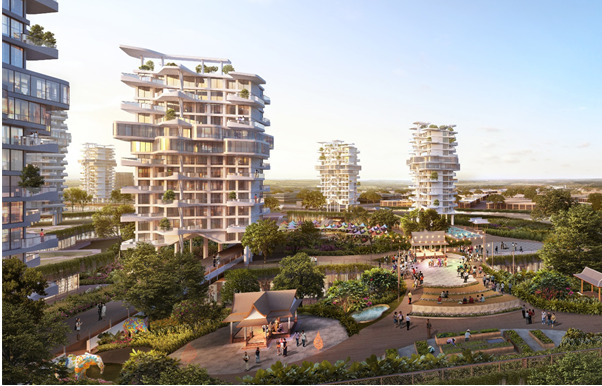
Green Deck with meditation spaces as well as flexible and adaptable events space
(Illustration for an industrial master plan project in Samut Prakarn Province, Thailand – CPG Consultants)
Decentralisation of Amenities
In light of pandemic resilience, decentralisation has emerged in urban discourse. Obviously, the decentralisation of the population from a single city centre to that of several urban sub-centres would reduce risks of transmission. Even in urban sub-centres, there may be opportunities to further decentralise. In the Philippines, as part of a master planning project for Metro Manila handled by CPG Urban Planning team, we designed the master plan to be self-sustaining. Cafes, restaurants, grocery stores, and other essential services were provided close to the communities, easing the demands of delivery services and eliminating the need for distant travel to supermarkets and malls.
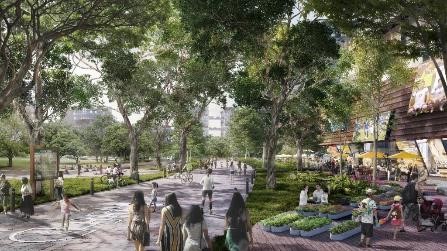
Masterplan Project in Metro Manila, by CPG Consultants
Transformation of Spaces into Urban Yards
During this pandemic, it was observed that the availability of public or community shared spaces with flexible use is crucial. Such spaces may be characterised as “private spaces on public spaces”, accommodating activities for individuals or small and intimate groups of people.
If urban rooms are defined as an internal space for communities to engage in social participation (e.g. exhibits, workshop halls, community centres), then these spaces can be considered as “urban yards”, which offer a certain level of ownership, but yet remains attached to the public’s use on today’s existing streets. Such urban yards are spatially optimal to balance spatial separation, privacy, and organic segregation.
Already existent in different cities in China, Vietnam, India, and the Philippines, urban yards are unplanned and can appear to be organic or even chaotic. Yet their inherent characteristics such as human scale dimension and density are effective for them to be temporarily converted and operated as “urban yards”, one in which the community understands, shares, and collaborates to execute monitoring, quarantine, and contact tracing in ensuring community’s health and safety.
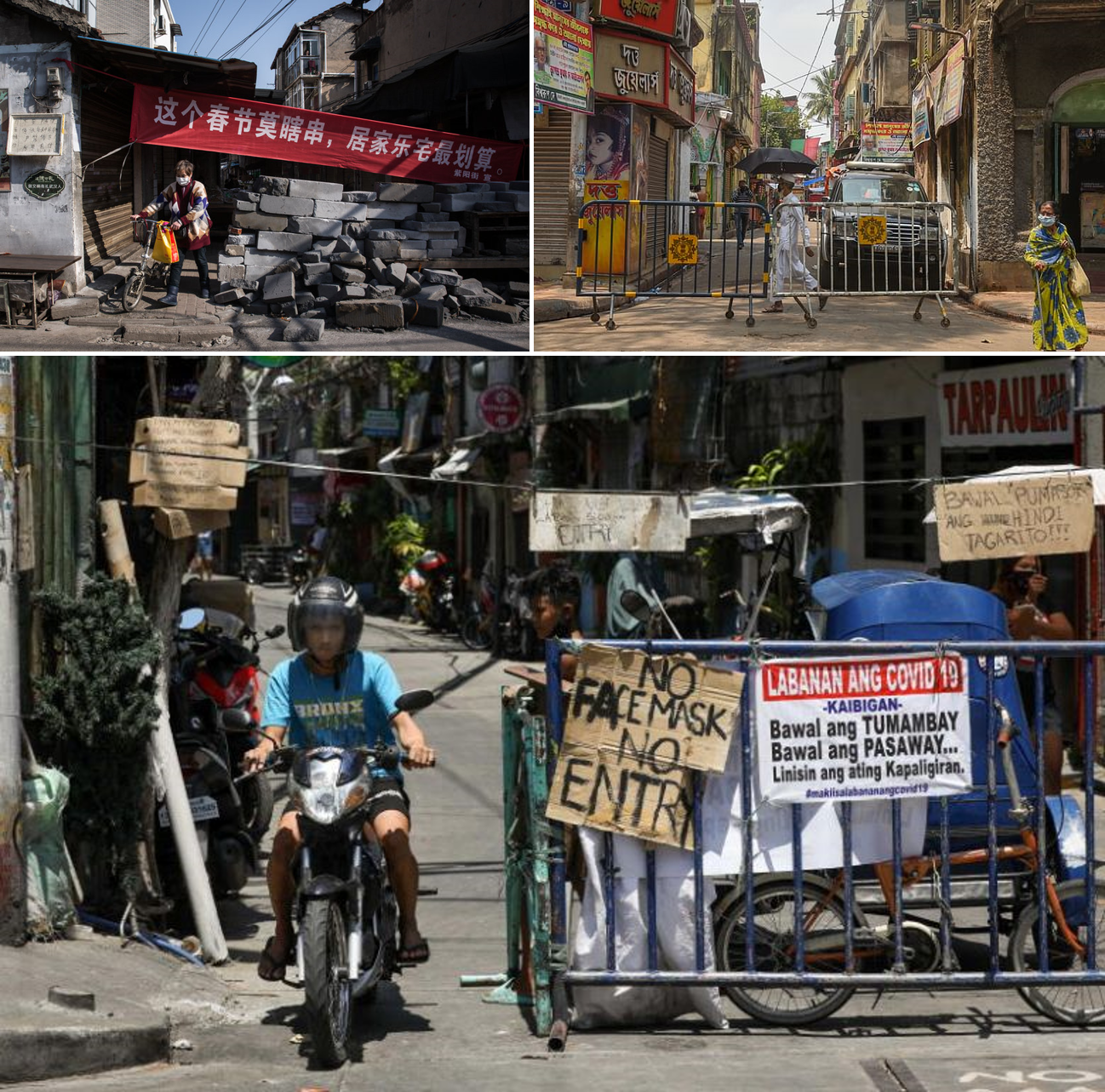
City streets in China, India and the Philippines operated by the local communities during the quarantine period
(Image credit from top left: NPR, thequint, The Straits Times)
We believe these street characteristics could be incorporated as design parameters of any future streets and user requirements, as we have attempted in some of CPG’s master-planned, finer-grained communities in Dubai, Manila, and Hanoi.
For example, in Dubai Silicon Oasis (DSO), Dubai, we designed an enclosed street called “Caravan @Oasis” intended as a test-bed route for the autonomous vehicle as well as an urban device to connect amenities to various neighbourhoods in DSO. It also provides flexible spaces to be used for smaller groups of people to perform a mix of activities, e.g. recreation, mobility, and limited social gathering.
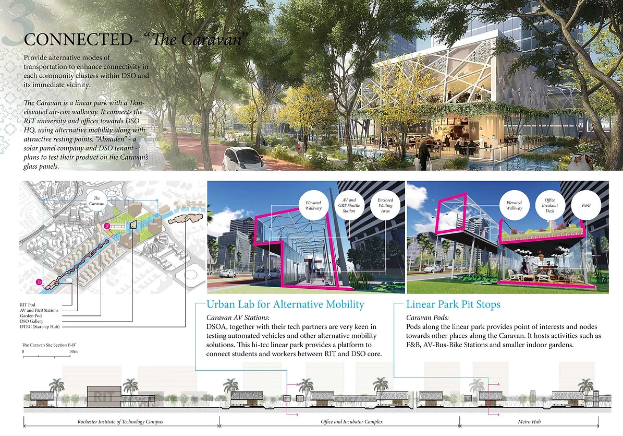
“Caravan @Oasis” Street Connector, Dubai (Image by CPG Consultants)
In Thanh Cong Hanoi, the neighbourhood was designed in harmony with the existing and fine urban grains. In effect, any programming and activities laid on the street are easily achieved through its closed-looped circulation and a balance between intimate and public gathering spaces.
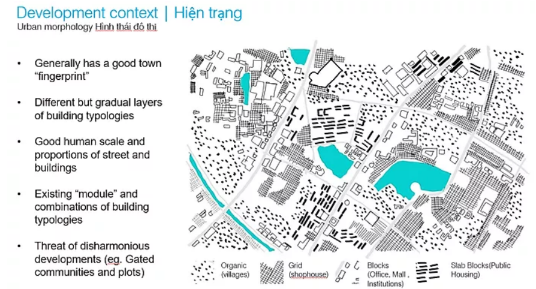
Than Cong Urban Grain and Typology (Image by CPG Consultants)
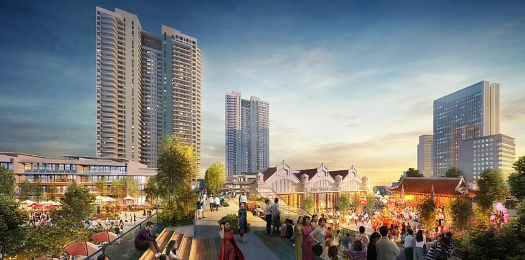
Thanh Cong Urban Redevelopment Community Elevated Street and Market (Image by CPG Consultants)
Even in a tourism product and non-residential urban development of our project in Manila, certain attributes of a street are used to achieve the desired qualities of the old alleys and walkways of Manila. The “Calle the Llegada” (Arrival Street) is a series of alleys, shophouses, and workplaces that are designed with narrow alleys and outdoor pods to give a pleasant comfortable walking experience. In times of the pandemic, these streets can be gated and in effect, helps in coordinating pedestrian flow during the pandemic.
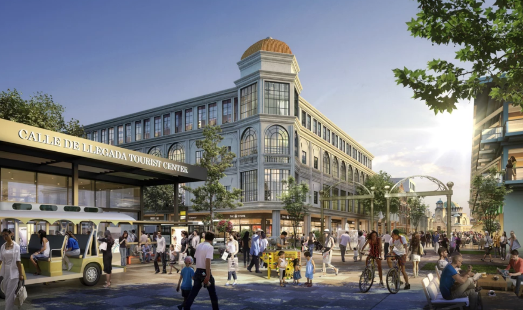
Calle De Llegada, Manila (Image by CPG Consultants)
As the pandemic transforms urban life, there will be more tangible changes in how people live and play, and subsequently, the role of how open, green and blue spaces will fit into these daily functions. In our future blogposts, we shall be looking into how public open spaces contribute to a sense of health for the Singapore community.
This article was authored by:
Ar. Iyn Ang, Senior Vice President
Urban Planning, CPG Consultants Pte. Ltd
iyn.ang@cpgcorp.com.sg
Ar. Rodeo Cruzado Cabillan, Principal Urban Designer
Urban Planning, CPG Consultants Pte. Ltd
rodeo.cruzado@cpgcorp.com.sg
Ar. Anucha Chomklin, Vice President
Urban Planning, CPG Consultants Pte. Ltd
anucha.chomklin@cpgcorp.com.sg


